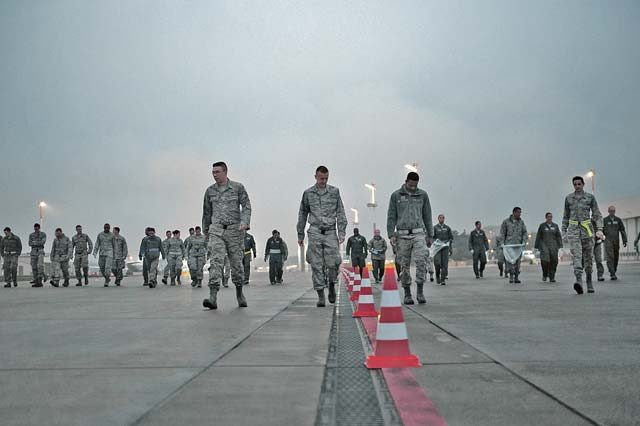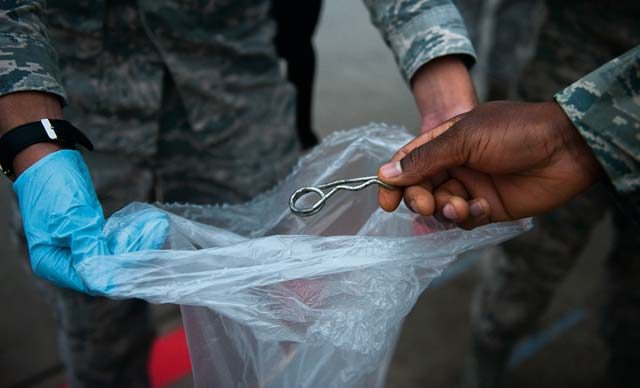
Hundreds of Ramstein Airmen walked the runway searching for foreign objects that could cause damage to aircraft and personnel
Sept. 20 on Ramstein.
A section of the flightline was closed down from Sept. 15 to Sept. 18 and used for this year’s Ramstein Bazaar. Airmen came together to help pick up debris from the event before the reactivation of Ramp 2, Taxiway Delta, and Hangars 1 and 2. The walk is part of the 86th Airlift Wing’s Foreign Object Damage Prevention Program.
“There’s a plethora of ways to cause (foreign object damage),” said Tech. Sgt. Daniel Graham, 86 AW FOD monitor. “Birds, maintenance, rocks in tires, unsecured items in vehicles and truck beds, and the loading and unloading of passengers and luggage on the flightline can cause FOD. Due to this, every ramp is FOD walked a minimum of once a week.”
The average FOD walk requires only about 35 people. With the annual Ramstein Bazaar being such a huge event, over 300 people came to pick up the left behind debris.
Items found during a FOD walk can include a wide variety of waste and debris such as pieces of metal, soda cans, zippers and paper. All of these items can create a FOD incident, which can lead to an aircraft being damaged. FOD incidents can cost anywhere from a few hundred to a few hundred thousand dollars depending on the circumstance.
“Among other possible damage, aircraft engines can suck up the FOD off the flightline,” Graham said.
The personnel that participate in FOD walks usually work on or around the flightline.
“I’ll do semiannual spot inspections on all the units to make sure they are meeting the intent of the program,” Graham said. “When people talk about FOD, they don’t realize that it’s not just checking your tires.”
Airmen can also be given more than the challenge of making sure the flightline is clear of debris. Sometimes, an object of debris called the “Golden Bolt” is deliberately placed in the area a FOD walk is scheduled. The person who finds the object is said to get a pass, or a day off from work.
“I enjoyed this morning’s FOD walk, and the Golden Bolt gives us Airmen further incentive to improve the quality of the flightline,” said Airman 1st Class Richard Watts, 721st Aerial Port Squadron ramp specialist.
The 86 AW FOD Prevention Program helps to ensure the safety of vehicles, personnel and aircraft here and is essential to the everyday operations of the flightline.



